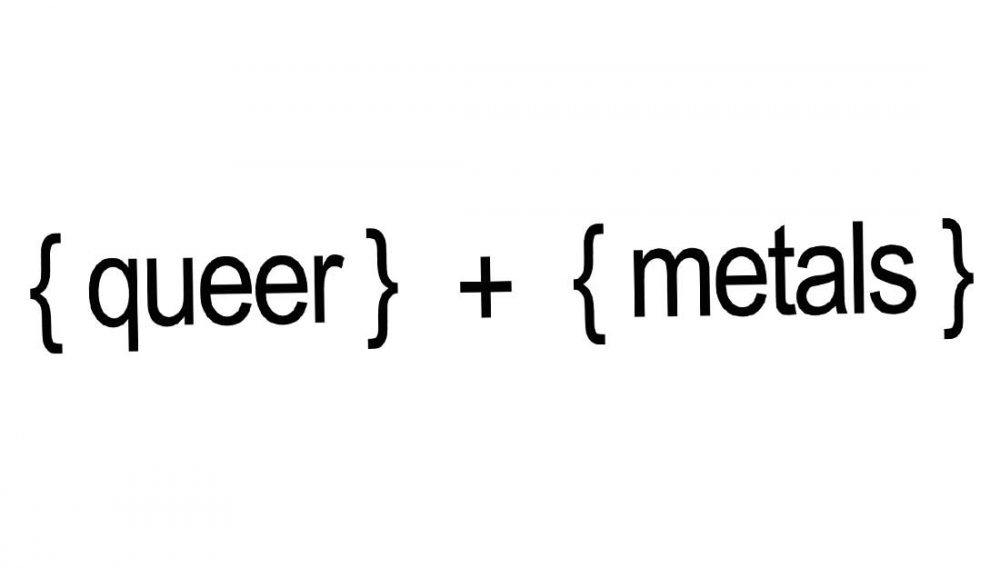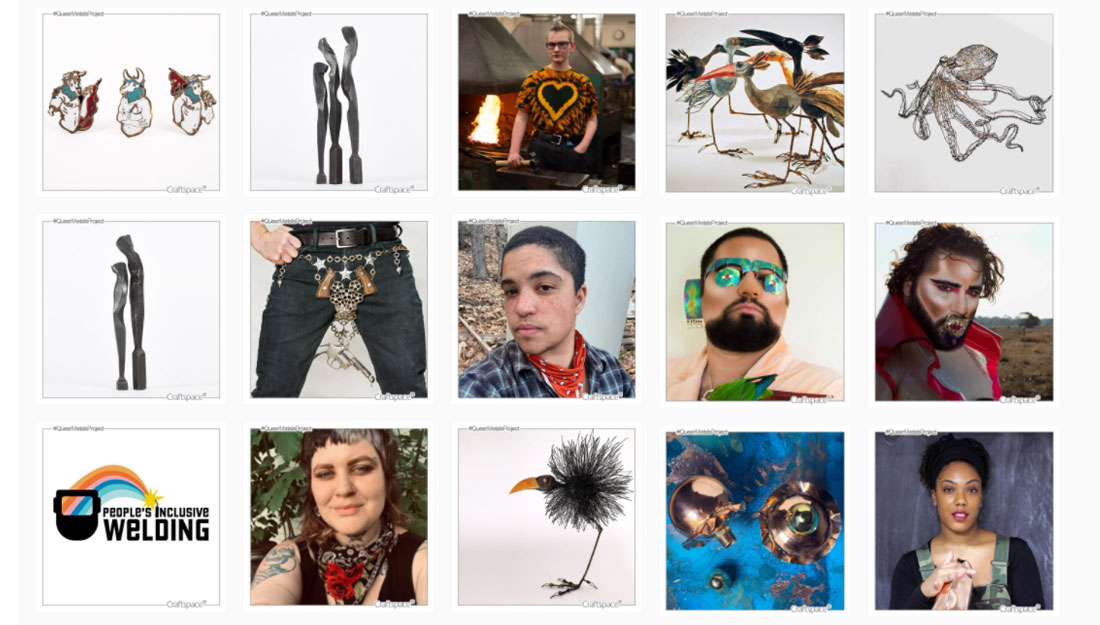An essay by Rebekah Frank
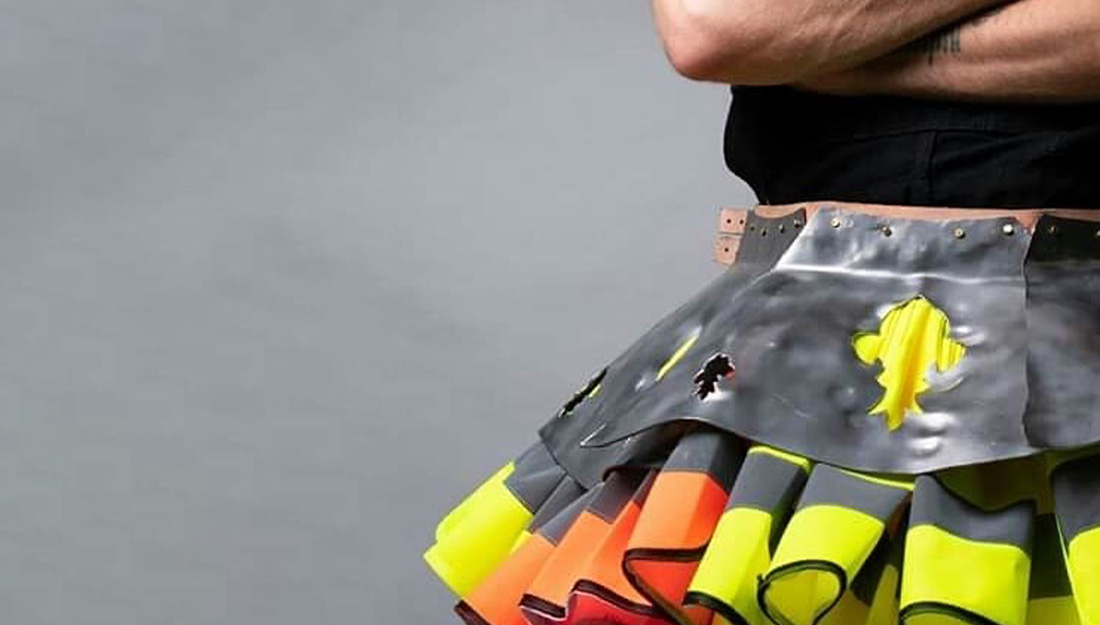
Quim Kamikaze. Photo: artist
Origins
The Queer + Metals Project began with an invitation. Craftspace reached out to ask if I would be interested in collaborating with them on an exhibition featuring queer metal artists. The premise was intriguing: How does queerness show up in the field of metalwork? I was curious. Even as a queer person working with steel, from blacksmithing to welding fabrication to jewelry, I don’t consider myself an authority on queerness or metalsmithing. I’m generally suspicious of anyone who presents themselves as an expert. I’m also not an academic steeped in queer theory and art history. Instead, my life happens to include the intersection of queerness and metalsmithing. And I’m not alone: There are many other queer metalsmiths. I proposed crowdsourcing the question, asking others to participate, to get curious, to wonder with me and Craftspace about what queer metals could mean.
Structures
I decided to use an online survey, promoted via social media as well as through craft and trade organisations, to invite other queer makers to share their perspectives. The survey was open for two months, from December 15, 2021 to February 15, 2022, and asked just four questions beyond demographic information:
-
Within what area of metalsmithing do you work?
-
How do you define your queerness?
-
What are other ways you identify?
-
What does queer metal mean to you?
I intentionally left these questions open-ended, allowing participants to respond with as many words as they needed to describe their way of working and being. Recognising that queerness isn’t the only or primary identity for many people, I included question 3, about other identities, to allow for queerness to be in conversation with immigration status, racial identity, class identity, mental health, and physical abilities. These intersecting identities are equally important indicators of how people see themselves and move through the world. My experience as a white, queer artist in San Francisco is drastically different than, say, a trans person living in rural America.
“I think of queer metal as an avenue for expressing ideas and sharing histories. As queer metalsmiths, we present new and alternative lenses of viewing the world. To me, it is not always about working in opposition to what already exists in our field, but asserting the beauty and complexity of otherness.”
Funlola Coker, she/her/+, @funlolacoker
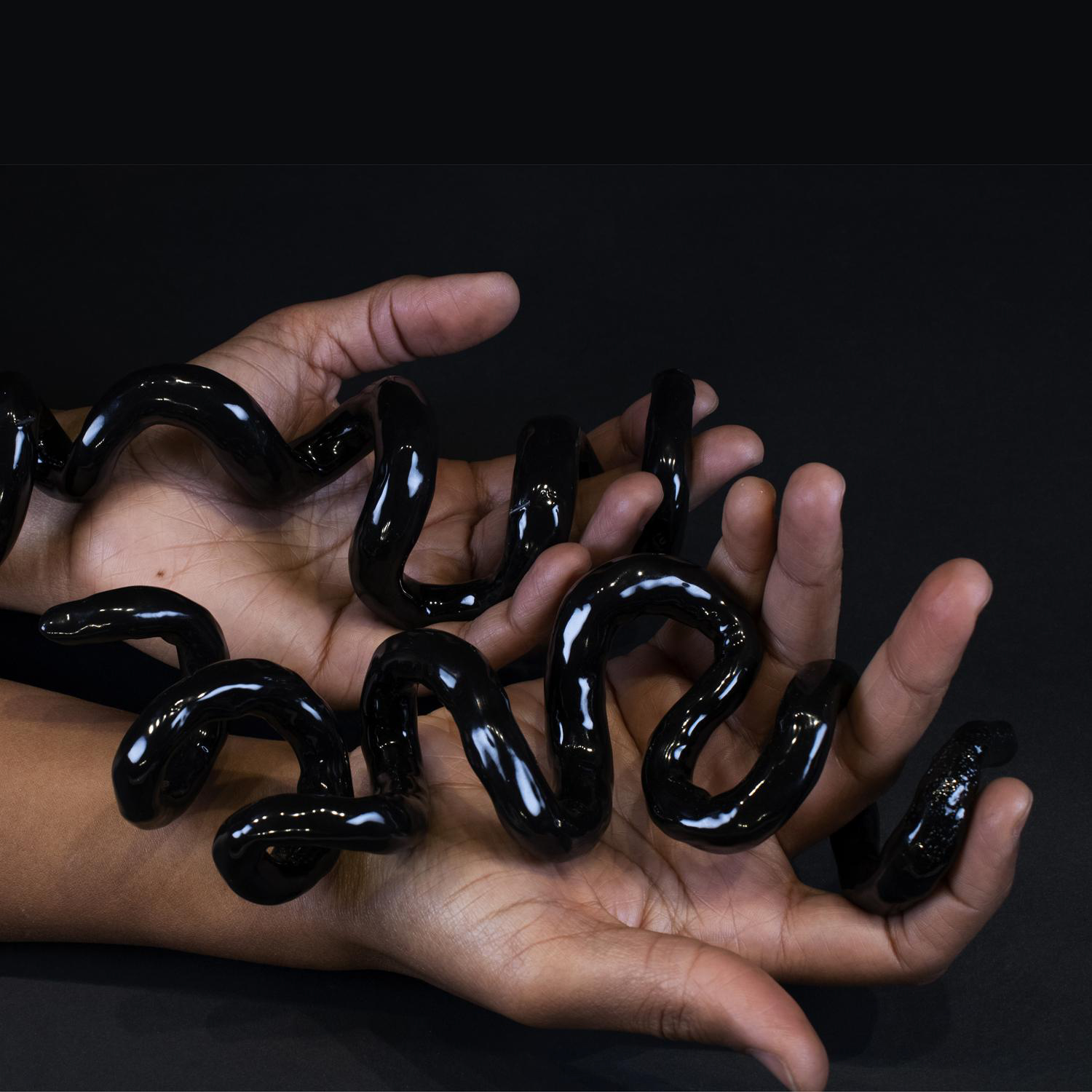
Inundated by Funlola Coker (Photo: artist)
The survey responses weren’t representative of the entirety of queer identity. They were limited in scope, due to access to the survey, a small survey pool, and the vagaries of Instagram algorithms. As part of this project, 16 participants were featured in a series of Instagram posts from March 1–24, 2022, and eight participants were interviewed on video for a more in-depth response to the questions. Both the social media posts and video interviews are included in the Queer + Metals exhibition, an in-person event happening during the Ferrous Festival in Hereford, England from March 25–April 3, 2022.
While the project opened with questions, it doesn’t seek answers. Many survey respondents mentioned their preference for the term queer because of its flexibility and inclusive embrace of various sexual and gender identities. Similarly, the field of metalwork and metalsmithing is broad, encompassing toolmakers, fabricators, blacksmiths, silversmiths, and jewelers working within traditional and experimental frameworks. I hope the Queer + Metals Project opens possibilities and creates connections within this overlapping community of makers. This essay describes some of the themes from the responses to the project’s questions and gives the perspectives of 119 queer artists working with metal in various forms from around the world.
“Queerness is a rejection of binaries and residing in a life in the in-between. Queerness is the freedom to define things for myself, and those definitions are some of the few absolute truths that I can rely on in a world full of arguments, nuance, complications.
I am what I am, no question, no theoretical dialogue about it. Even with fluidity, there is a truth in each incarnation.”
Cate Richards, they/them, @cateoconnellrichards
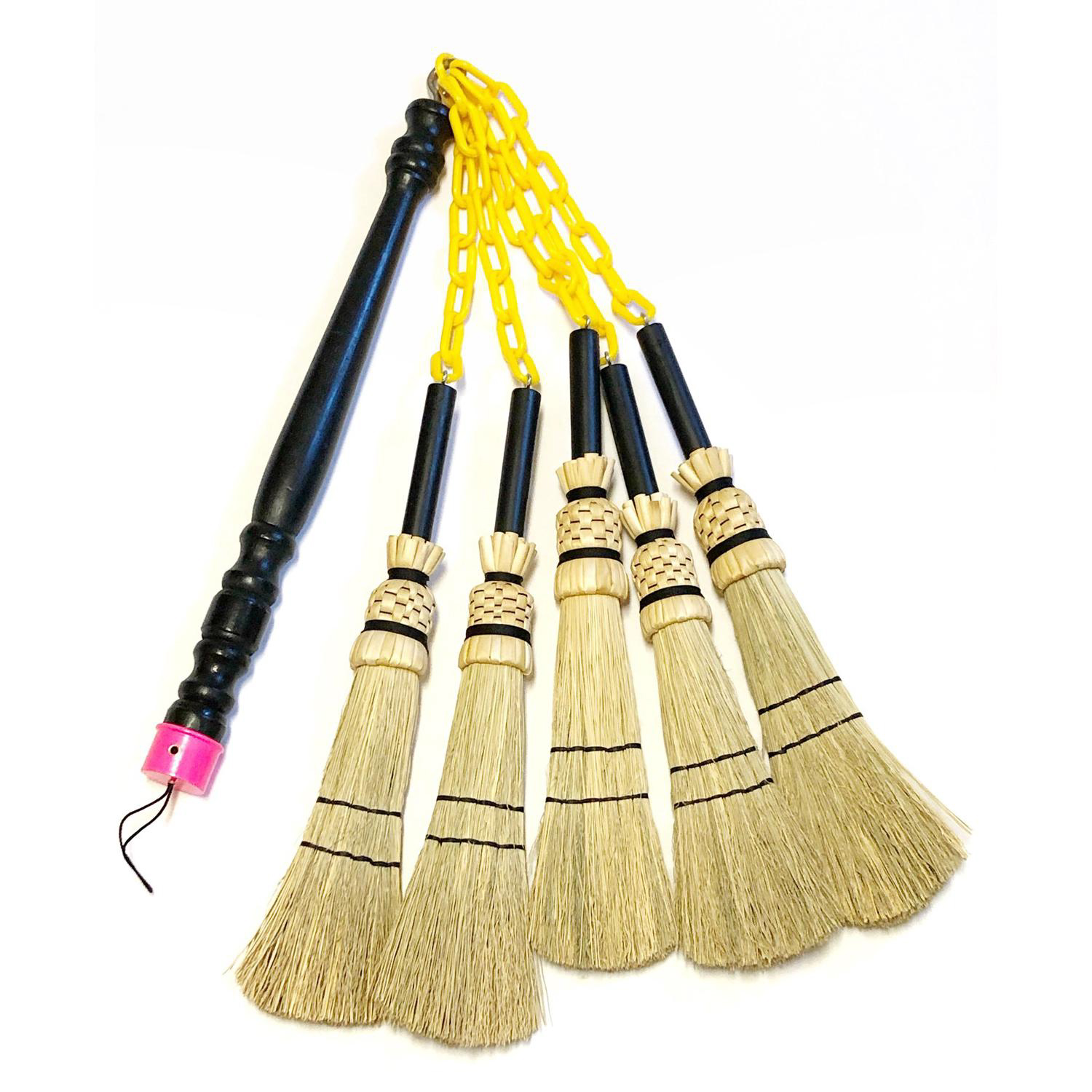
Clean Me Up by Cate Richards (Photo: artist)
Transformation of material + body
Artists working with metal take a cold, hard material and transform it using heat. By transform, I don’t mean simply repurposing the material for art. Metal artists change the very state of the material, altering the internal structure of the metal in the process. Blacksmiths heat steel in a forge to just below its melting point, making it pliable, much like wet clay, but blazing hot and untouchable. Jewelers heat silver or gold with a torch beyond its melting point, changing it from a solid to a liquid, allowing it to be poured into molds to solidify into different forms. Welders join pieces of metal by applying electric current to pinpoint areas, melting and mixing the metal in a molten puddle that, when cooled, is stronger than the original material.
Many artists describe the transformational process of working with metal as a reflection of the transformation they experience as part of their queer identity. Recognising, exploring, and coming to terms with that initial sense of otherness inherent in queerness involves a radical realisation, both joyous and traumatic. Queer people have feared rejection from community, family, and friends; they have questioned their futures as traditional paths into adulthood were obscured; they have felt social alienation and disconnection from their physical bodies. At the same time, as a queer person comes into themselves, they discover new desire, develop new communities, and understand their unique way of being in the world. Within queerness is the ability to hold differing feelings at once, like loving the biological family that might reject you or reveling in your differences that may repel others. Being queer requires an active internal discovery that forces a person to assess, learn, re-assess, and evolve their sense of self. British blacksmith Annie Higgins eloquently connects the metamorphic potential of steel to the queer experience:
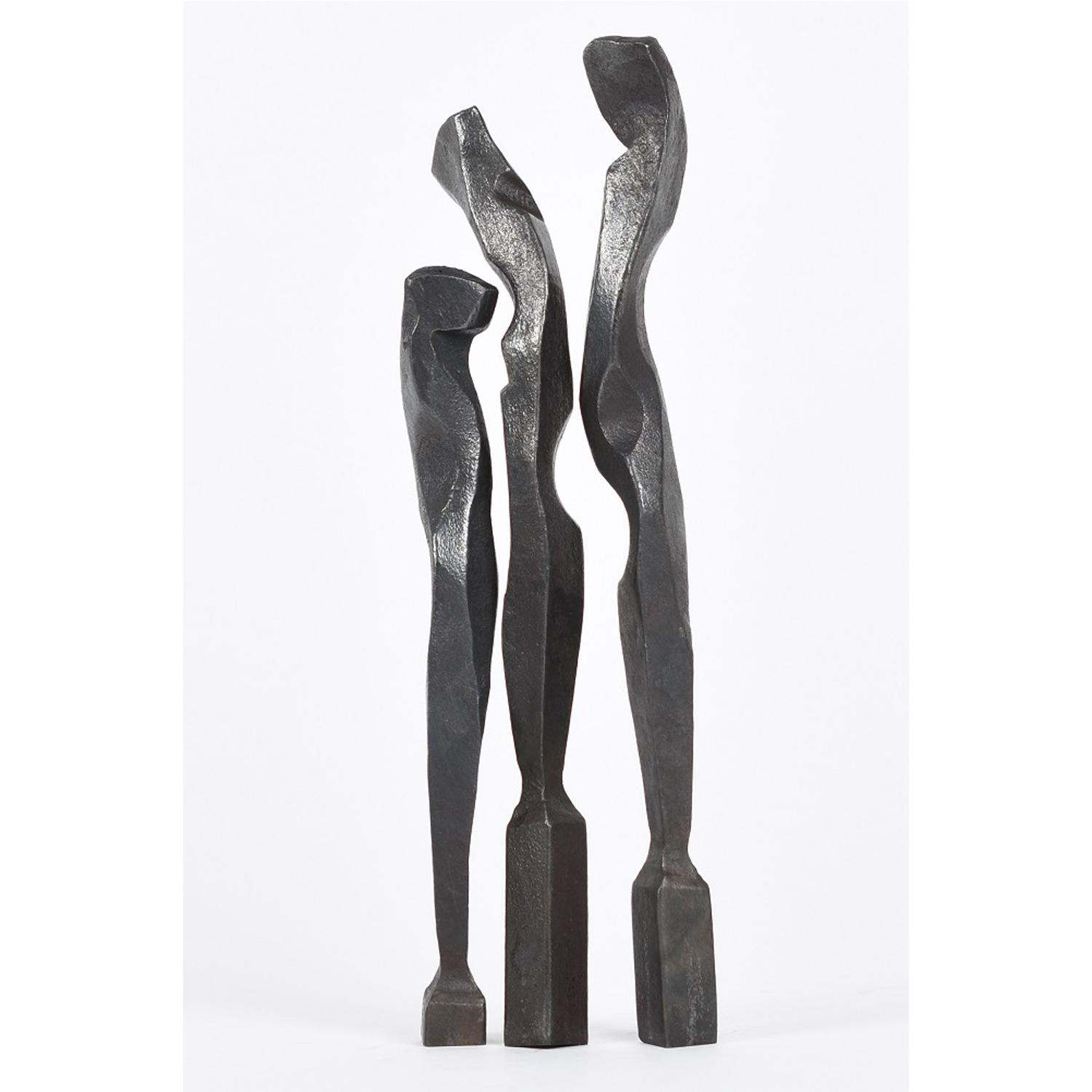
“I believe that the materiality of hot steel itself reflects my experience of queerness. The facets and marks of construction characteristic of forged objects give simple pieces an underlying complexity that is beautiful. Steel is solid and hard and cold but there is also an internal vibrancy to it, an underlying metamorphic potential for fluidity. Because forging is neither an additive nor subtractive process, the volume which is already there must be manipulated and stretched to create new forms.”
Annie Higgins, she/her, @annie_higs
Metamorphosis 2 by Annie Higgins (Photo: artist)
Similarly, outside forces form and shape queer people. The core of their being doesn’t change, but external influences affect how they present themselves and inform an internal dialogue that either supports or questions their sense of self. While attitudes about non-normative lives are changing, especially in Western media with depictions of queer lives visible on the screen, queer people still face hardship in this process of discovery and becoming. While all people are shaped by external forces and pressures exerted on them by family, community, culture, and the state as they move into adulthood, queer people are faced with questioning of self, threats to their being, and state-sanctioned violence and erasure. Throughout all this, who one is as a person doesn’t change, but circumstance can shrink one’s sense of worth and value. This is one reason why suicide rates are so high among LGBTQ+ youth. It takes incredible resilience to thrive in a culture that doesn’t recognize your value. Spanish-American sculptor Amparo Pons Grau notes the resilience and ability of metal to maintain its capacity for being itself, even as it goes through intense shifts in material quality—from brittle to ductile, from solid to molten—in the process of making:
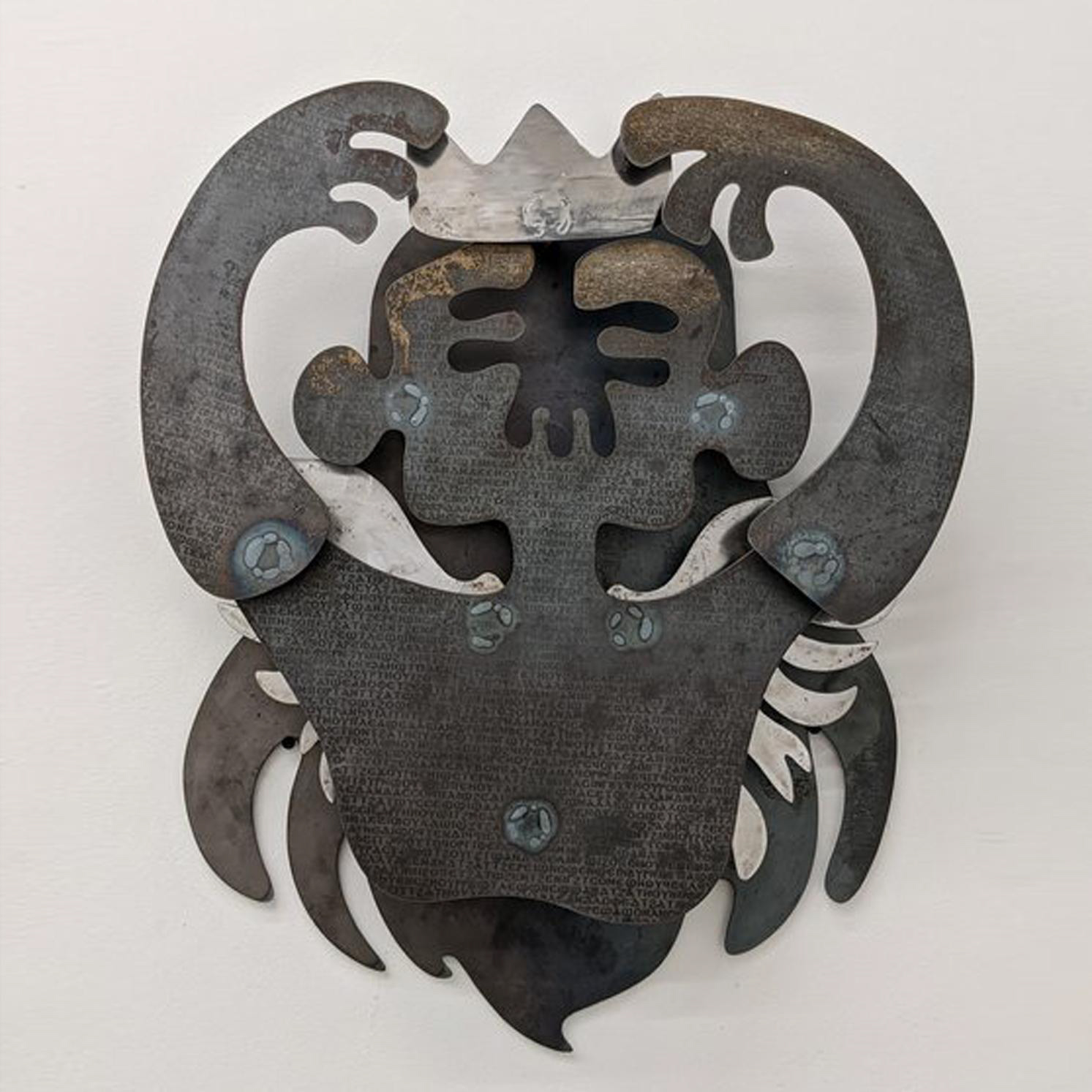
“Metal has the potential to become anything. It will morph and react to every intervention to become sturdy or fragile… If you somehow err in your process, metal can be cut and put back together seamlessly, it can be welded and ground and welded again. It is infinitely forgiving in its prolific-ness and potential for re-use. There is something in the resilience and transformative capacity of metal that is, at least to me, reminiscent of the queer experience.”
Amparo Pons Grau, she/her, | @bokrns
Portable First Aid Kits by Amparo Pons Grau (Photo: Jason Caternolo)
This ability to withstand change connects to the experience of the queer emergence of self through external hardships, but also can be connected to the flexibility of societal definitions. Canadian blacksmith Katie Ford notes that the public perception of steel as cold, unmoving, and rigid, isn’t the reality of the characteristics of the material. Steel has the capacity to stretch until it breaks, its ability to flex makes it a structurally sound building material in earthquake-prone areas, and it can rust away to dust. It isn’t only what you first perceive. Similarly, gender and sexual identity are viewed through a Western, colonialist, and capitalist lens as “rigid and unchanging.” These terms have a long history, across cultures, of having fluidity that allows for more than two expressions of gender and an infinite array of sexual identity.
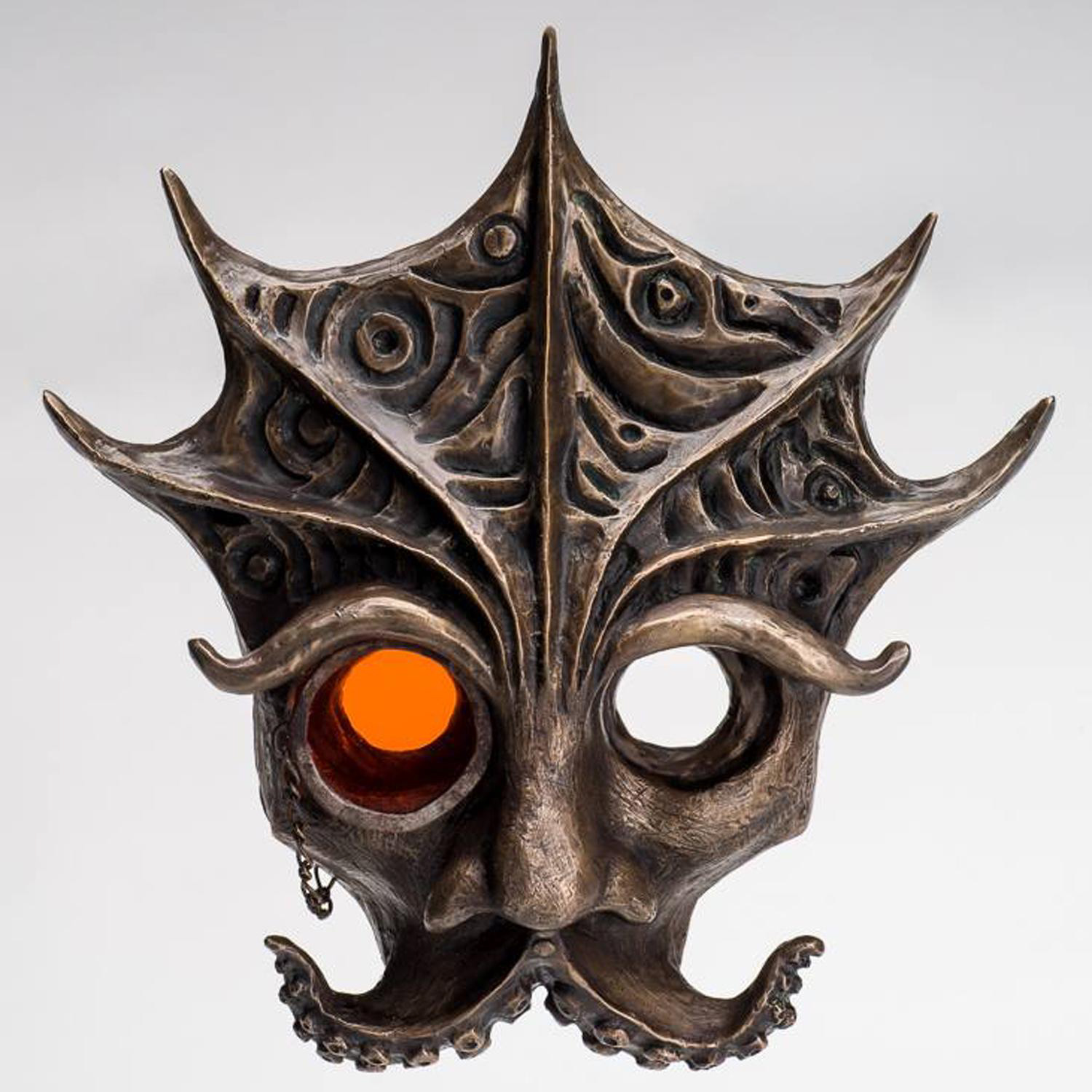
“Gender and sexual identity for so long have been viewed by society as something rigid and unchanging. Cold and unmoving. Most people would look at it and not be able to imagine it any way other than how it is laid before them. This is how metal is viewed by many people. In reality, metal is quite the opposite. Metal is much like queerness.”
Katie Ford, she/her, @ferrousfox
Tentacle-Stache by Katie Ford (Photo: Jeremy Addington)
Many other survey respondents connected the transformation of the material itself, the resilience of the material, and the multifaceted understanding of the material to their experience.
Affirmation of gender + self
Another theme that many respondents spoke to involved the confidence boost and gender affirmation they received through the process of metalwork. Learning any new skill instills confidence, and while metalwork isn’t the only process that builds confidence, its unique material histories, tooling, and processes provide a different experience for its makers.
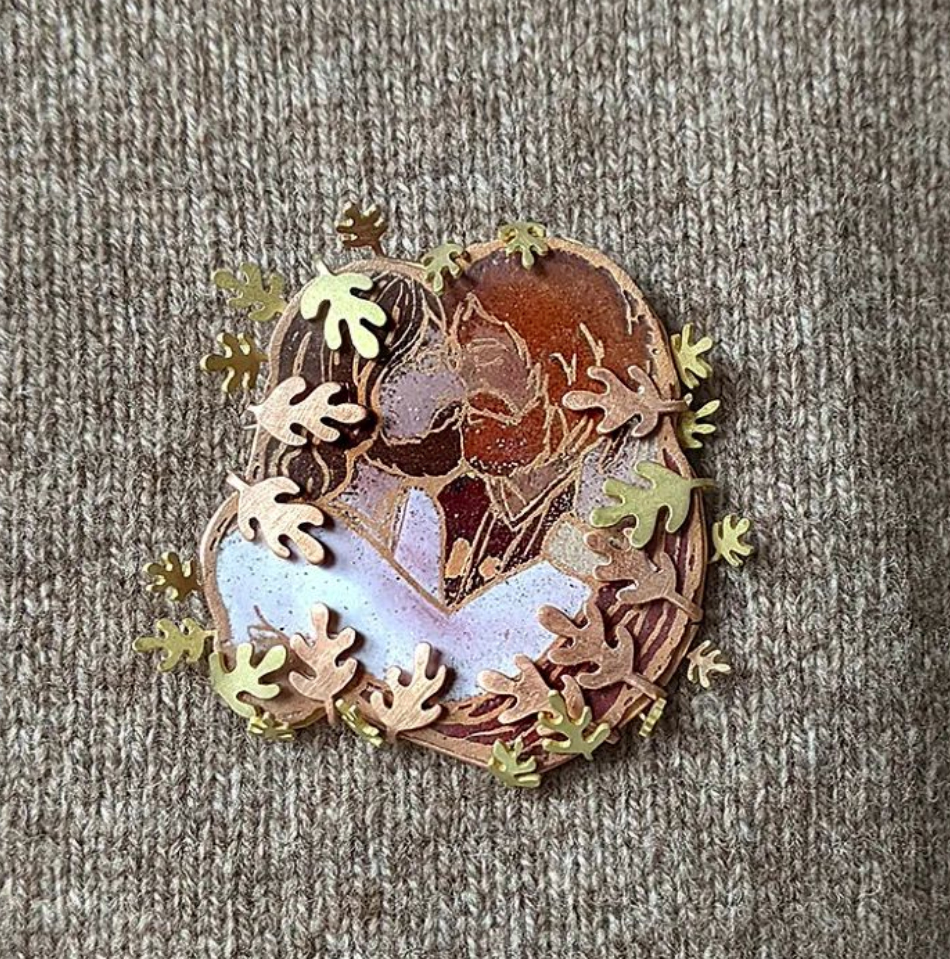
“I see craft as a way for people to feel like they’re in control of their bodies and their decisions. … The ability to take a material, learn intimately how to work with it, and be able to physically create an object is reminiscent of the ways queer persons take the lives and identities they are given, undergo a process of reflection — emotional and psychological cataloguing and physical reformation — and then take this information and energy to create their own existence.”
Elliot Papp, he/him, @elliotwinter_artjewelry
Untitled by Elliot Papp (Photo: artist)
The gender affirmation many people experience is unique to the process, histories, and environment of metalwork. The action of forging on an anvil, lighting a torch, or casting molten metal requires the full attention of one’s entire body. Several people referenced the physicality of the process as a way to ground themselves in their bodies, which is important when living with gender dysphoria, a feeling of disconnection, unease, and discomfort in one’s body related to culturally projected gender expectations. Gender nonconforming queer women and transgender men specifically spoke of existing and thriving in what has been a traditionally hypermasculine space as empowering.

“Metal, especially blacksmithing, has been dominated by cis men for so long that it feels transgressive to be a tiny trans man in this space. [W]ielding my hammer and my tongs … is a radical act of putting myself in a place I don’t belong and making it my space.”
Marsh Moran, he/they, @hinter_objects
Marsh Moran (Photo: artist)
The fact that blacksmithing, metal fabrication, and jewelry have been traditionally male-dominated spaces doesn’t mean that only masculine-presenting people should be welcomed in those spaces. The expansiveness of queerness means more than just embracing masculinity, one side of the binary, from an alternate perspective. Queerness invites infinite possibilities for experiencing gender euphoria—a feeling of connection between the internal self and the external gender presentation–—that doesn’t necessarily mirror social norms.
Several people wrote about how they first embraced the style of masculinity performed within the field. Later, they questioned their complicity with gender norms in order to fit within the metalworking space. They mentioned moving into an in-between space to honor both the masculine and feminine sides of themselves. In this way, they recognize the complexity of navigating gender identity and create the habit of continually questioning gender expectations.
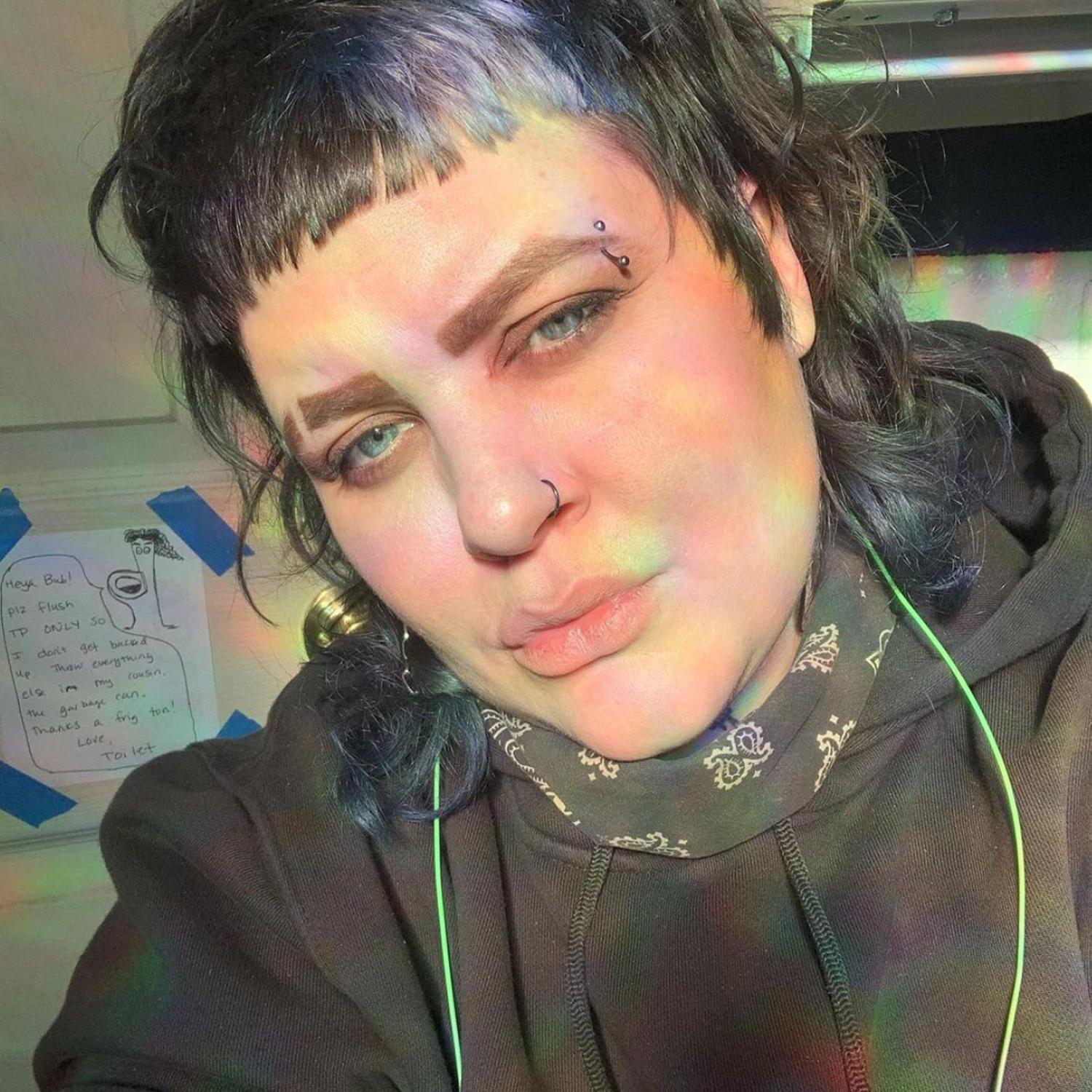
“The industrial side of welding really had me using toxic masculinity as a way of blending in and being one of the boys. Once I began to dive into art, it was super healing to use my trade freely and creatively while unlearning all of the toxic behaviors I had so heavily adopted.”
Jo Remillard, they/them, @peoples_inclusive_welding
Jo Remillard (Photo: artist)
I want to stress that not all masculinity is toxic. However, the way that many cultures have allowed misogyny to run rampant makes it difficult to separate masculinity from its toxic past. More than one person mentions their desire to redefine masculinity to better reflect their sense of compassion for themselves and others.
While many respondents initially were attracted to subverting or existing within the masculinity of metalsmithing, others seek to reframe how conceptions of femininity and masculinity can exist through bringing their queerness into the space. Within queerness, it’s important to recognize the different modes of expression, experience, and presentation without prioritizing one over the other. Queerness is inclusive, a celebration of difference, and a questioning of assumptions.

“[Metalwork] helped me learn about my own masculinity, showed me what doesn’t work for me, what kind of masculinity was truly mine.”
Byrd Pappas, he/him, @welderbyrdmetal
Custom Fire Wings by Byrd Pappas (Photo: friendly burner)
Expression of creativity + identity
The idea that the identifier queer needs to be applied to a way of making struck many people as unnecessary. Several people spoke to their queer identity as being simply themselves, rejecting or questioning the need for labels and definitions. Their presence, desire, and very being exist and, therefore, don’t need to be justified or explained. Others noted their reluctance to being pigeonholed as a [insert modifier here] artist: queer artist or Black artist or female artist. American blacksmith Rachel David speaks of this as a “yes, and…” situation. Her identity encompasses many things and she is simply a blacksmith.

“I am not just a female blacksmith, not a white female, queer, androgynous blacksmith, but all of those wrapped up and just a maker. Like my colleagues, who are typically cis-het, white, and male, yet have no determinations in front of their titles, my work should be seen away from systemic assumptions about gender and meaning.”
Rachel David, she/her, @_redmetal_
Phases by Rachel David (Photo: Sesthasak Boonchai)
Society often demands that we explain ourselves, using definitions and labels, so people know what to do, which box to tick. Queerness is a disruptor of easy definitions. For me, coming of age in the mid 90s, there were fewer ways to be in the world or at least a more limited language to express those ways. Today, there is an overwhelming number of identifiers that are constantly shifting, as we have made space in the culture for different ways of being. I view these terms as useful tools that help us understand ourselves. They also are helpful for communicating complex ideas with others, a kind of shorthand. I envision these terms as rungs on a ladder, each rung providing a little more understanding of who we are. If a term feels good, use it; when it doesn’t, try a new one. Who you are at the core won’t change, even as language, culture, and your creative spirit continue to evolve.

“As an extension of myself, my art is me. It will convey aspects of my identity whether I like it or not, which means whatever parts of me that identify as queer will brightly appear in my work.”
Eloise Winter, they/them, @E.lu.Iz
Eloise Winter (Photo: Rafael D’Oliveira)
During my graduate-school experience, a young curator introduced me to the idea that everything is a self-portrait, that no one can make what you make. For me, this sense of authorship that values an individual’s creative voice was powerful. It gave me agency to value myself.
From the perspective of someone who has been culturally othered, learning new ways of thinking through making, using their physical body in a positive way, and exerting control in a small area of their life is deeply life-affirming. This is incredibly important when the same person may be receiving messages that question the validity of their individual value. As Magdalena Csipö points out, queerness shows up, even when you aren’t trying to express it explicitly:
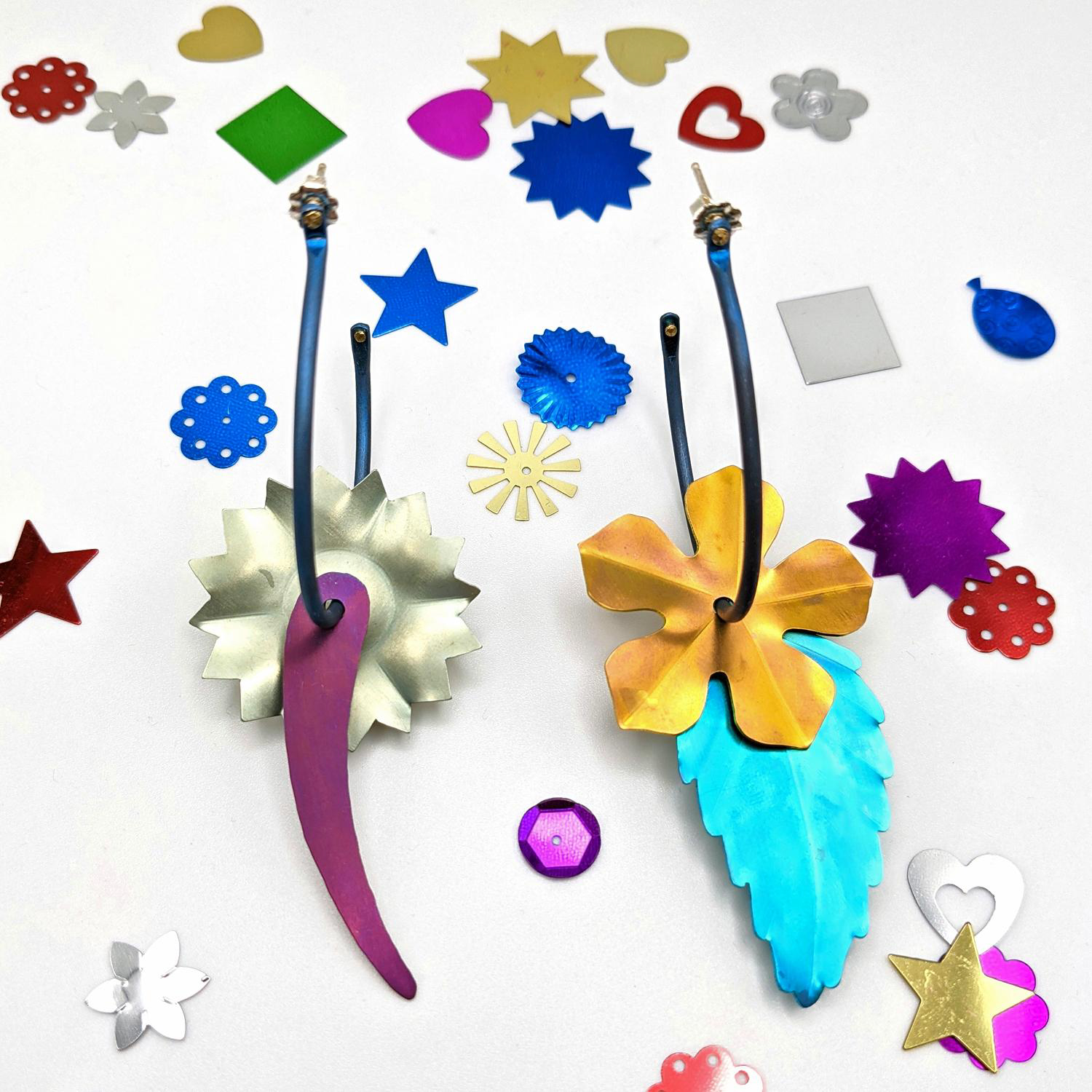
“It’s important to connect with ourselves as we connect with others. My work isn’t outwardly queer or autistic in content, but those qualities are part of me and show up in everything I do. On some level I’m trying to reconnect with the joyful little weirdo I used to be, before the world got so heavy to press me into molds I didn’t fit.”
Magdalena Csipö, they/she, @fake.skymall
Magdalena Csipö (Photo: artist)
So break some rules, be creative, express yourself, and, in doing so, your innate queerness will emerge because it exists within you. This reimagining of the self, redefining of terms, and questioning of tradition are at the core of queerness itself and at the intersection of queerness with metalworking.
Claiming queer + metals

“Queer metal resonated with me deeply because it says the word open, vulnerable, challenging, and empathetic. It says we are creating a space for interrogation into why things are the way they are, and to be able to challenge gender norms in jewelry, mastery or techniques, and to fuck with traditions.
I love the notion of queer metal.”
Aaron Patrick Decker, he/him, @aaronpdecker
Art Pieces by Aaron Decker (Photo: Jenn Bondy)
Sometimes, just saying the words, asking the questions, creates the space to start a conversation. Some people wondered why anyone would take ownership of the term, as if queer metals could be owned, packaged, and sold. Others were excited by the term. For them, the existence of something called queer metal made them feel included in something.
I’d like to briefly recognize the allies who responded to the survey and those who may be reading this essay, attending the exhibition, or following along online. For every queer artist who engaged with this project, there are many who could not participate. Some people still have reason to fear harm, pigeon-holing and shunning. Some worry that participating in a project like this one hampers their future prospects. Allies actively create safe spaces for queer people to exist without fear.
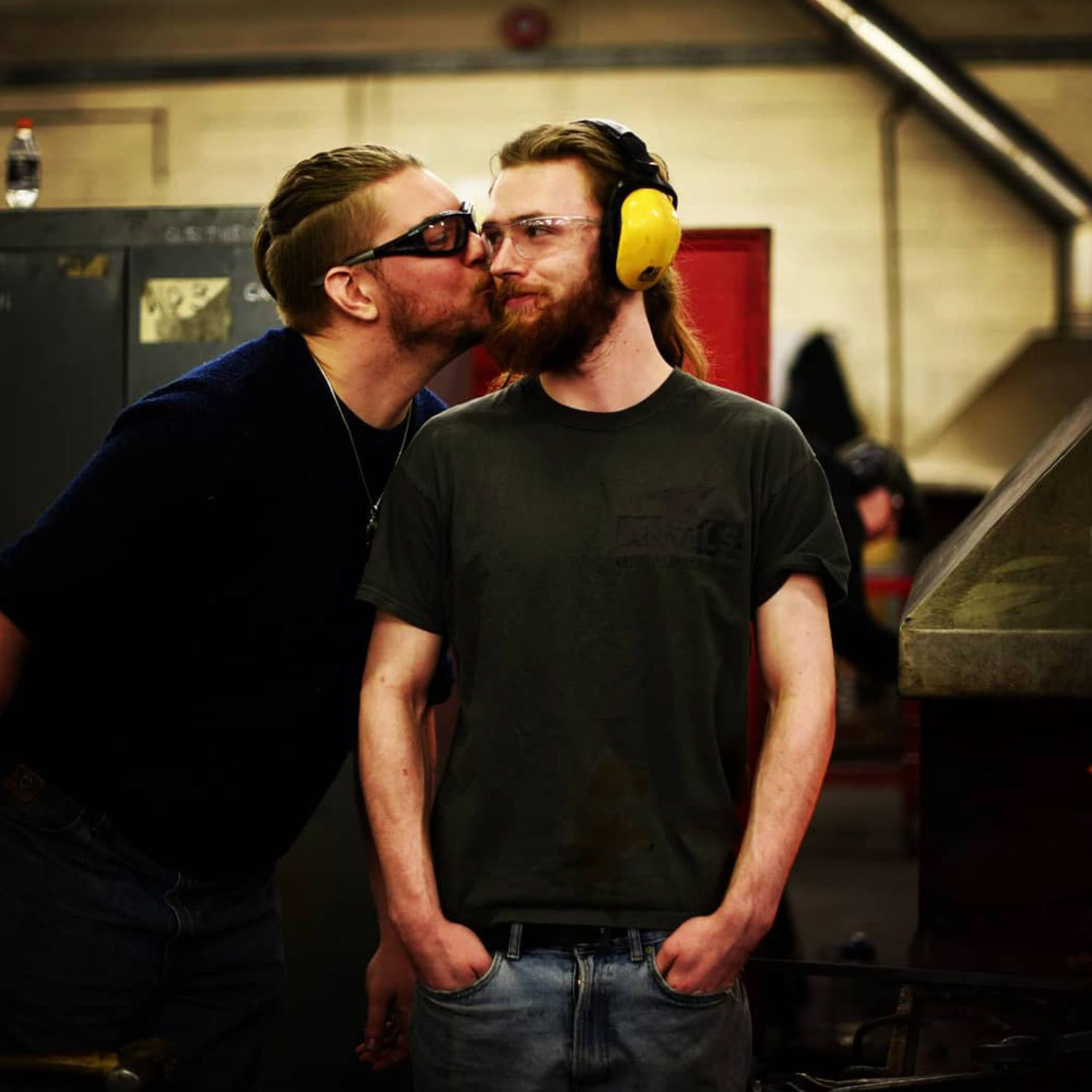
“My brothers, sisters, and siblings in the queer space make my craft better. They should be safe to explore it. It’s my duty to try and make that happen, whenever I can.”
Joshua Fincher, he/him, @theharlequinsforge
Joshua Fincher and David Bath (Photo: artist)
Over 100 people responded to the queer metals survey. They shared their experiences and perspectives with open minds and incredible vulnerability. Some people expressed doubt, others excitement at the possibility of combining these two words. Together, we thought about the potential of queerness and metals and found more than simple answers. After all, not all questions have answers. Some questions lead to conversations that generate more than any perfectly-contained answer could. The variety of responses, the diversity of intersectional identities that complicate any sense of the singularity of queerness, and the perspectives that shifted based on region, age, and sense of safety were big takeaways from this project. There is so much more contained within this question. If anything, this project is a beginning, a promise of things to come.

“Queer metal” is a promissory declaration. It’s a shared commitment to create in ways that are authentic to us, to support one another in how we do so, and to collectively and collaboratively work to dismantle the power structures that reduce us to these identities.
”Queer metal” is also promissory as “indicative of something to come; full of promise.” I see queer metal as expressing a determinative statement about what comes next for us all: the future is radically, inevitably queer.”
Chris Lucibella, she/her, @chrislucibella
Readiness to Hand by Chris Lucibella (Photo: artist)
Definitions
Queerness is often used as an umbrella term that includes both gender expression and sexual identity. This can be a bit confusing, so here’s a quick introduction, though these words will shift in meaning over time. These are just guideposts along the way.
“Queer is deeply personal and public. It’s intensely individual and communal. It’s a verb and a noun. It’s the sexual and the platonic. It’s identity and it’s disidentification. Queer is the rejection of the seduction of binaries.”
Sex is a medical term that includes male, female, and intersex.
Gender encompasses rather a lot. As related to sex, cisgender or cis is the term used for a person who identifies with the perceived sex at birth. The term transgender or trans applies to those who don’t identify with the sex they were assigned at birth. However, this either/or binary doesn’t allow for the fluidity of the human experience.
Gender identity and expression are culturally defined and often coded as an either/or presentation of masculine and feminine. Judith Butler, an American academic, introduced the idea of gender being a performance, a collection of learned behaviors that were done, as opposed to being determined by one’s sex. Gender expression can be physical expressions, such as clothing choices, hair style, and gestures. Gender expression can also be behavioral, including attitudes, skills, and jobs. There are many words for the incredible breadth of the combination of gender and gender expression. Some gender expressions are man, woman, nonbinary, gender nonconforming, genderfluid, agender, and two-spirit.
Sexual identity or sexual orientation exists in conversation with gender expression. This can include same-sex attraction (homosexuality, i.e., gay and lesbian) and opposite-sex attraction (heterosexuality, i.e., straight). This oppositional either/or doesn’t allow for the variety of human desire and the changeability of desire. Additional sexual identities include asexual, bi- or pan-sexual, and queer.
In the early 2000s I came across an online group of Texas ranch women laughing over a “You Know You’re a Dyke If…” list. The ability of a woman to change her truck’s oil was an indicator. This community of straight, cisgendered women did it regularly. What did it have to do with sexual orientation, gender identity, or physical desire?! Absolutely nothing.
A straight cisgender man can perform ballet.
A trans woman can be a blacksmith.
A nonbinary person can do gymnastics.
These definitions are meant as frameworks to help people understand the complexity of queerness. They aren’t in any way meant as definitive, but I hope they help.
This project is commissioned by Craftspace and supported with funds from Arts Council England and Ferrous Festival.
